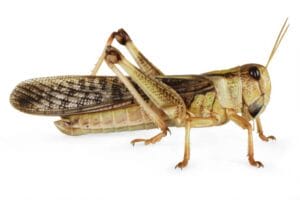(JNS)

A locust.
Tel Aviv University scientists have discovered that the female locust’s central nervous system has elastic properties, allowing them to stretch up to two or three times their original length. The female locust performs this feat when laying eggs in the ground, and without causing irreparable damage.
“We are not aware of a similar ability in almost any living creature,” say the researchers. “Nerves in the human nervous system, for example, can stretch only up to 30 percent without tearing or being permanently damaged.
“In the future, these findings may contribute to new developments in the field of regenerative medicine, as a basis for nerve restoration and the development of synthetic tissues.”
The study was conducted by a team of Tel Aviv University researchers led by Bat-El Pinchasik of the School of Mechanical Engineering in the Fleischman Faculty of Engineering and Amir Ayali of the School of Zoology in the Wise Faculty of Life Sciences.
“When the female locust is ready to lay her eggs, she digs a hole in the ground that will offer them protection and optimal conditions for hatching,” Pinchasik explained.
“As she digs, the female extends her body, until sensors located along its length signal that she has reached a suitable point for depositing her eggs. Thus, an adult female, whose body length is about four to five centimeters, may, for the purpose of laying her eggs, stretch her body to a length of 10 to 15 centimeters, then quickly return to her normal length, and then extend again for the next egg-laying,” she said.
The researchers discovered that the locust’s nervous system doesn’t have an accordion-like mechanism, but rather elastic properties.
“The superpower of the locust is almost something out of science fiction,” Ayali said. “This finding is almost incomprehensible from a biomechanical and morphological point of view.”








